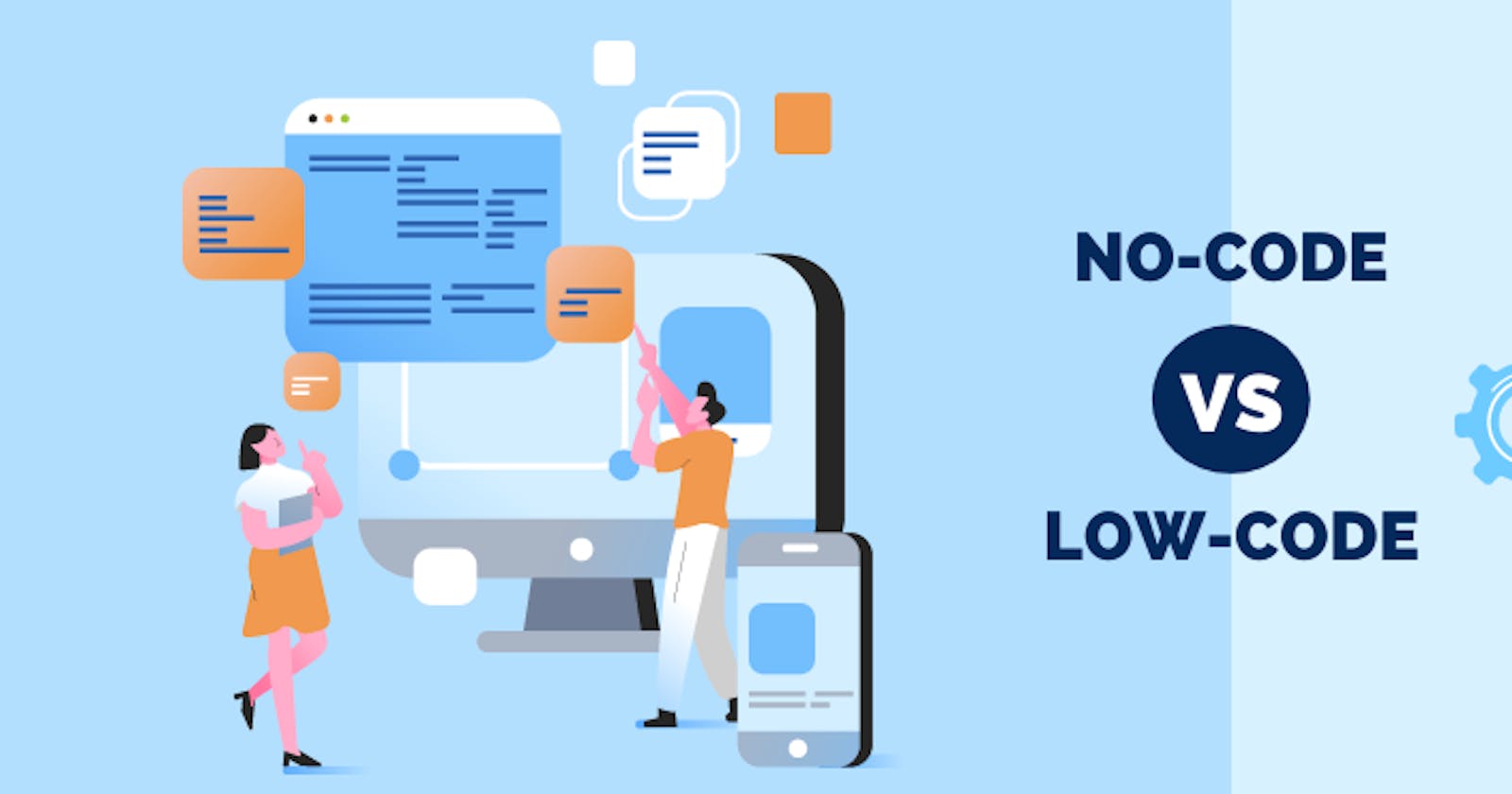No-Code vs Low Code: The Difference
Finally, I bring to you the awaited topic on the concepts of Low Code and No-Code and what make them differ.
Through graphical tools that remove programming language complexity, no-code development promises programming without typing a line of code.
What is No-Code?
The concept of no code refers to a software development method that hides the complexity of the application's source code. No code development tools combine different techniques:
- Pre-packaged graphical templates and widgets to assemble user interfaces,
- Drag and drop of application components to create the application's synoptic, and to combine the different steps of the processes: conversion tunnel, order tracking...
- Workflow automation to trigger actions based on events, such as the generation of alerts or countermeasures below a certain turnover or traffic threshold on a website.
Through a WYSIWYG (What You See Is What You Get) development environment, the user will be able to test his application and progress to several integrations until it works as expected. In other words, no code describes the capability of creating software without writing a single line of code.
What is Low Code?
Low-code is a visual approach to software development that optimizes the entire process to speed up development. The low-code approach can streamline the deployment of a variety of applications by abstracting and automating every step of the application lifecycle. Your organization can develop business-driven solutions by breaking down traditional silos between business and IT (promoting continuous collaboration).
What is the difference between No-code and Low-code?
In general, the applications listed in this article follow a logic that aspires to be as code-free as possible. As the name suggests, low-code refers to a no-code environment with the possibility of concurrently editing the application's source code. In the context of web development, "no-code" and "low-code" are frequently mentioned together because they are similar terms. Visual interfaces are used by both low-code and no-code platforms to allow users to develop their own business solutions.
The main difference between low-code and no-code platforms, as implied by their names, is that low-code platforms can still include coding in certain cases whereas no-code platforms require absolutely no coding whatsoever.
It goes without saying that the simpler the no-code development tools are to use, the more limited they will be. In contrast, complex and low-code oriented ones are richer and leave the door open to so-called special developments, off the beaten path, even inventive and requiring some coding. The intervention of programmers is obviously required for certain developments. The main low-code development platforms include Appian, Mendix, Microsoft (with its Power Platform), OutSystems, Salesforce, and ServiceNow.
Why no-code?
No code has multiple advantages. Firstly, it lets business teams create their own applications without relying on developers. Creating an online survey with Google Forms or automating processes with Zapier and IFTTT is a good example of this practice
With no-code platforms like Strikingly, Weebly, and Wix, small businesses and freelancers can create websites. Although they can create online stores, they still only offer very basic features. It is, for example, impossible to create conversion tunnels involving the integration of third-party software and management rules with such a tool.
How to do No-code?
No code development tool allows you to create applications without touching the underlying code. You don't need to be a developer to use them. Nevertheless, navigation, ergonomics, and graphics skills will be necessary.
The Advantages of No-Code?
It gives business experts the possibility to automate routines, for example, to generate a response to a certain type of email or to integrate data from one software to another. It will also allow them to quickly create application mock-ups (or proofs of concept) in order to validate the development of a more substantial project that no code, due to its limitations, will not be able to address 100%. A project that will then involve the intervention of programmers.
Examples of No-Code and Low Code Tools
There are many no-code development tools. They can be classified into several categories:
- No code forms: Google Forms, Microsoft Forms...
- No code productivity management: ClickUp, Monday, Notion...
- No-code application development: Appy Pie, Builder.ai, ksaar, Quixy...
- No code website development: Bubble, Sitalacarte (french), Strikingly, Webflow, Weebly, Wix...
- No code database: Airtable, Smartsheet...
- Workflow automation no code: IFTTT, Microsoft Flow, Zapier...
- AI platform: Alteryx, C3.ai, Google Vertex, H2O.ai...
The low-code application platform (LCAP) market includes Mendix, Microsoft (with its Power Platform), OutSystems, Salesforce, and ServiceNow. These five technologies are among the leaders in Gartner's latest magic quadrant in this field.


